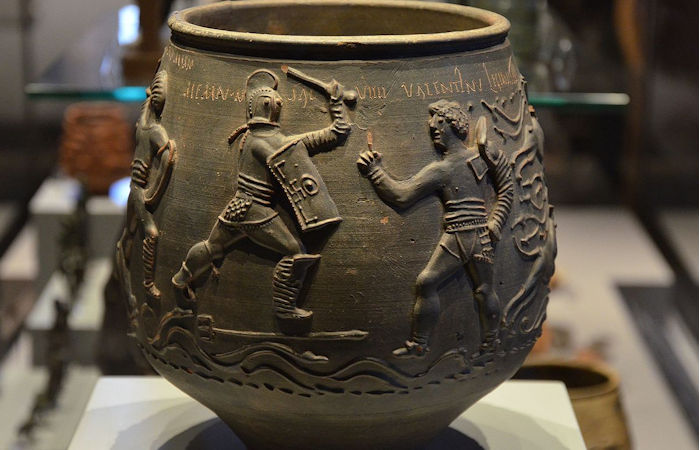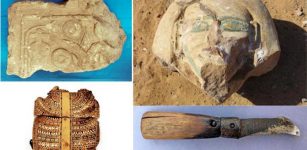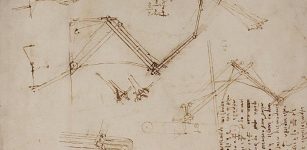Colchester Vase Offers ‘Startling’ Evidence Of Gladiator Fights In Roman Britain
Jan Bartek – MessageToEagle.com – The latest analysis of the ancient Colchester vase offers evidence that gladiator fights took place in Britain in the late second century A.D.
Found in Colchester in 1853, the 23cm-high (9in) vessel, made around AD 160-200, is described as “one of the most important, and perhaps famous, pots from Roman Britain” by Colchester Museums.
This beautifully decorated pot was discovered in a Roman grave at West Lodge in Colchester. It depicts a gladiator fight. It‘s one of the finest examples of ceramic art known from Roman Britain. Credit: Carole Raddato – CC BY-SA 2.0
Made of local clay, the ancient vase depicts gladiator combat and has an inscription bearing the names of two fighters, Memnon and Valentinus.
With no written information, this was the “only evidence” of such duels in Britain, the head of Colchester and Ipswich Museums told The Observer.
The findings have led to “startling new conclusions,” Frank Hargrave added.
“It’s the only evidence of a Roman arena gladiator combat actually being staged in Britain,” he said. “There are no written descriptions. The vase is such high quality that there’s been a bit of snobbery, an assumption that it couldn’t possibly have come from Britain, whereas all the analysis has now put that to bed.”
“There’s nothing else like that from Britain. It’s a commemorative piece, almost a trophy for the trophy cabinet. Later, it’s used as a funerary vessel. There must be an intimate connection with the deceased. They could well have sponsored the games. Or they were an absolute sports nuts. For whatever reason, they saw the fight and thought, ‘I want a memento of that,’” Glynn Davis, a Roman archaeologist and CIMS senior curator said. He described the findings as “incredibly significant.”
Davis said the vase may have belonged to a sponsor of the gladiatorial fight depicted.
Analysis of the human remains inside the pot suggested the deceased person was over 40 and may have come from overseas.
Since gladiators were slaves, scientists say Memnon and Valentinus were stage names.
As reported by the Guardian, John Pearce, senior lecturer in archaeology at King’s College London, argued that – as such names were sometimes based on Homeric heroes – that of Memnon may have been inspired by the mythical bellicose king of the Ethiopians, whose martial reputation was second only to Achilles, who later slew him at Troy. “Memnon appears quite often in Roman literature. He’s described as this massively impressive ‘black-skinned’ person, this hero who comes from Troy. I’m wondering why Memnon would be chosen as the name of the gladiator. Is that because we’ve got a black gladiator who is from somewhere well south of Colchester – from north Africa?”The vase shows the moment after Memnon overcomes his opponent, who is holding up his forefinger in a sign of submission by gladiators.”
During Roman times Colchester was known as Camulodunum. Located in Essex, 80 km northeast of London, in what was the territory of the Trinovantes, the Roman occupation of Camulodunum began in the AD 40s. Roman Emperor Claudius (10 B.C – 54 A.D.) personally oversaw the Roman attack on Camulodunon. The town was renamed Colonia Victricensis in honor of his triumph, and a temple was built there to worship him. Camulodunum was a focal point of the Boudican revolt.
See also: More Archaeology News
Camulodunum is possibly the oldest Roman town in Britain and was reportedly the first capital before London. It was one of the three largest and most important towns on the island.
The vase will be displayed in a major exhibition on gladiators at Colchester Castle from 15 July. Roman oil lamps, including one shaped like a gladiator’s helmet, will be among the exhibits.
Written by Jan Bartek – MessageToEagle.com – AncientPages.com Staff Writer











